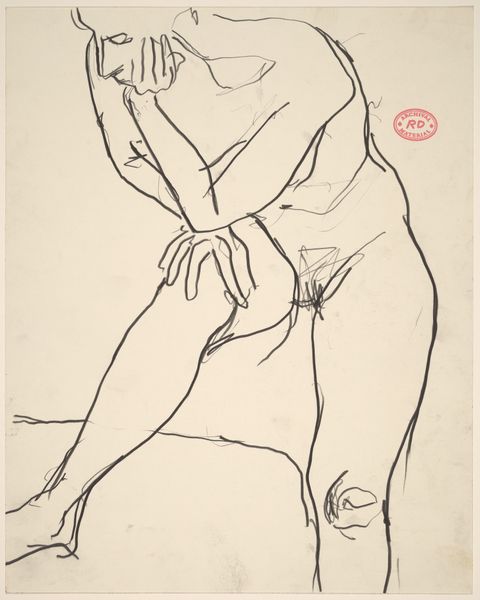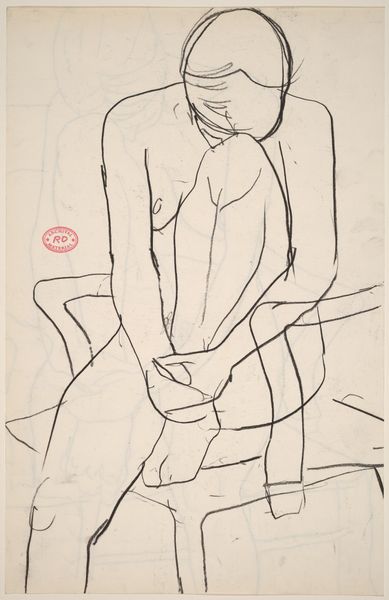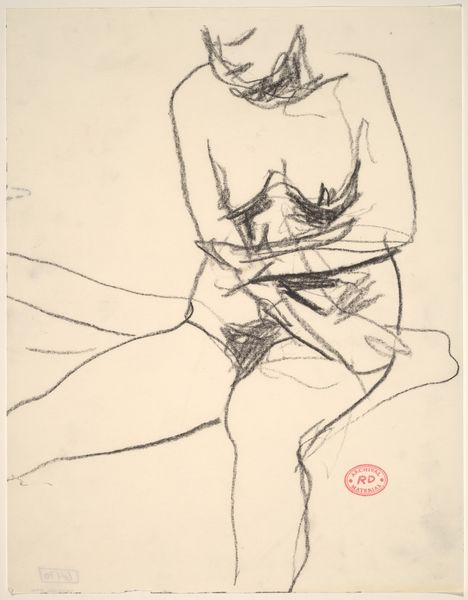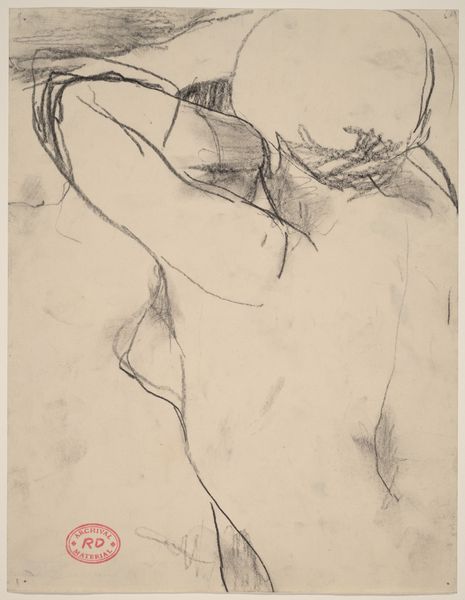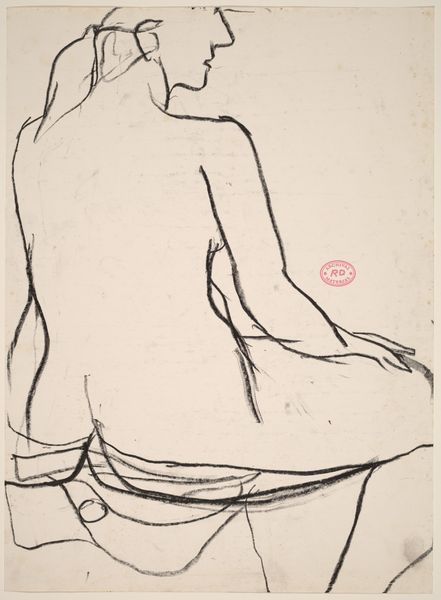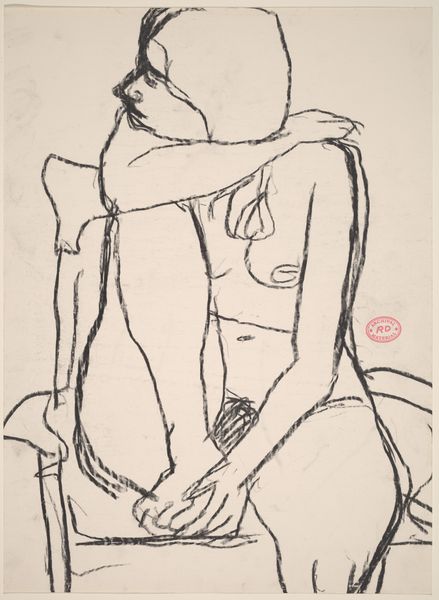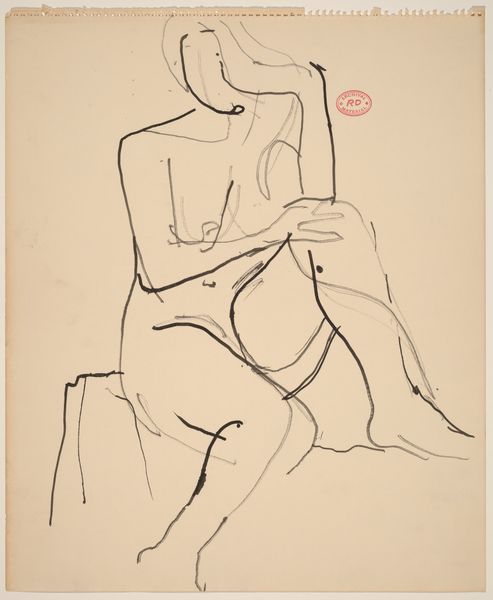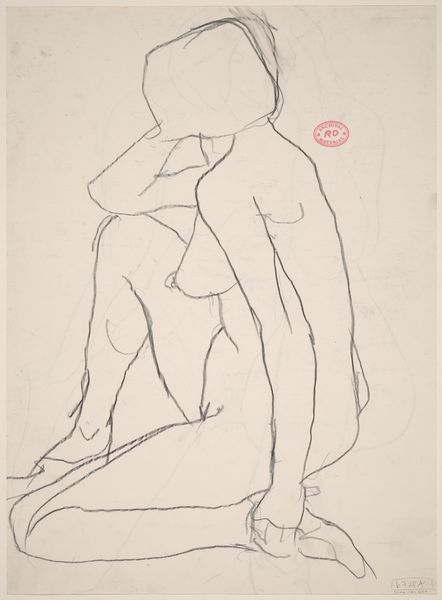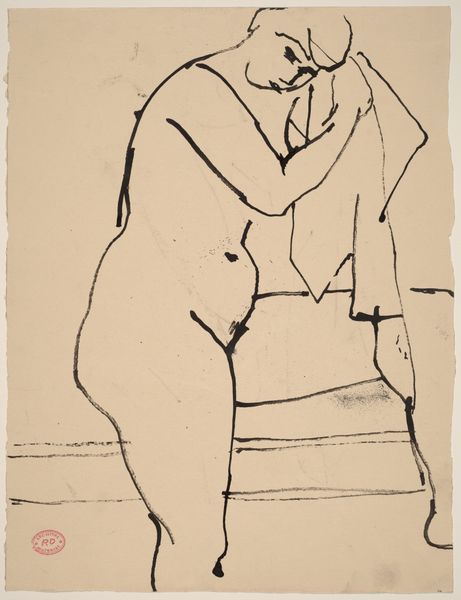![Untitled [seated nude leaning on her left leg] by Richard Diebenkorn](/_next/image?url=https%3A%2F%2Fd2w8kbdekdi1gv.cloudfront.net%2FeyJidWNrZXQiOiAiYXJ0ZXJhLWltYWdlcy1idWNrZXQiLCAia2V5IjogImFydHdvcmtzLzgyZWU0NjY0LWQ3OGMtNDEyZi1iOTE5LTk3MjA1ZGM0NzBlNS84MmVlNDY2NC1kNzhjLTQxMmYtYjkxOS05NzIwNWRjNDcwZTVfZnVsbC5qcGciLCAiZWRpdHMiOiB7InJlc2l6ZSI6IHsid2lkdGgiOiAxOTIwLCAiaGVpZ2h0IjogMTkyMCwgImZpdCI6ICJpbnNpZGUifX19&w=3840&q=75)
Untitled [seated nude leaning on her left leg] 1955 - 1967
0:00
0:00
drawing, ink, pencil
#
portrait
#
drawing
#
ink drawing
#
figuration
#
bay-area-figurative-movement
#
ink
#
pencil
#
nude
Dimensions: overall: 43.2 x 35.6 cm (17 x 14 in.)
Copyright: National Gallery of Art: CC0 1.0
Editor: Here we have Richard Diebenkorn's "Untitled [seated nude leaning on her left leg]," an ink and pencil drawing from sometime between 1955 and 1967. There's a fragility to the lines, a casual intimacy to the pose. How do you interpret this work, considering its historical context? Curator: I'm drawn to the way Diebenkorn reclaims the nude, a classical subject laden with art historical baggage. This wasn't simply about depicting a body; it was a statement. After Abstract Expressionism, figuration was fraught. By embracing it, even in this fragmented style, Diebenkorn engages in a dialogue with the established norms. Do you see any traces of abstraction here? Editor: Absolutely! The sketchiness, the way the background is suggested rather than defined... it feels like the figure is emerging from an abstract space. What was the artistic climate like then that made this a daring piece? Curator: Exactly! The post-war American art scene was dominated by Abstract Expressionism and Clement Greenberg's formalist criticism, which privileged flatness and non-representation. Artists who reintroduced the figure risked being seen as reactionary. Diebenkorn, though, carves out his niche, and uses the body as a way to challenge this trend. Editor: So, the act of drawing a nude figure became, in a way, a political statement against the dominant artistic discourse? Curator: Precisely! And it highlights how power operates within art institutions. Which works were promoted and acquired into important museum collections? Who was being championed and why? Diebenkorn is speaking to this canon. Editor: This perspective really reframes how I see the drawing. It's not just a study of form, but a commentary on the artistic climate of its time. Thanks for opening my eyes. Curator: My pleasure. Considering the politics of imagery certainly enriches how we read artwork.
Comments
No comments
Be the first to comment and join the conversation on the ultimate creative platform.

